Wanna know some mind-boggling facts about Saturn? Then you have stumbled upon the right post.
This unique planet has been a matter of major interest to humans since the olden days. By the time you have read this post, you will learn many new things about the ringed planet.
25 Intriguing Facts About Saturn
1. Introduction to Saturn
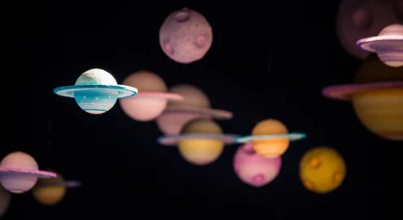
Saturn is the 6th planet in our solar system from the Sun. it is also the 2nd largest planet among the 8 planets in our solar system.
It has a mean radius of about 36,184 miles or 58,232 kilometers.
Whereas the polar radius of the planet is about 33,780 miles or 54,364 km and the equatorial radius is about 37,449 miles or 60,268 kilometers.
It is a gas giant like Jupiter. The planet has an axial tilt of about 26.73-degree.
2. What is the size of Saturn compared to earth
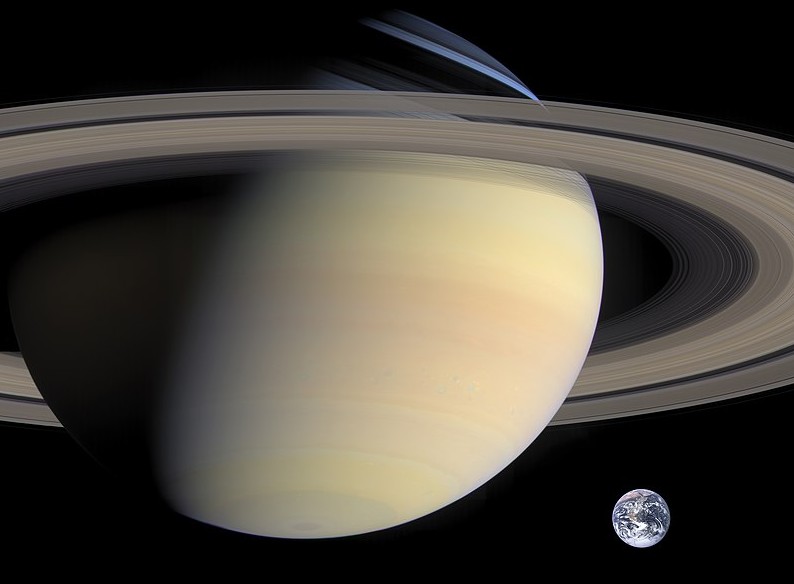
Saturn is the 2nd largest planet in the solar system after Jupiter. The planet has a diameter of about 74,897 miles or 120,536 kilometers.
That makes it about 9 times larger than our Earth in diameter.
It is about 95 times more massive than Earth. According to that, you can actually fit about 764 Earths on Saturn. Let that sink in for a moment!
3. Saturn is a Gas Giant
As we have already said Saturn is a planet like Jupiter that is a gas giant. But what does that mean? That means Saturn is made of gas and lacks a definite surface. Primarily, it is consists of Hydrogen and Helium gas.
By volume, the outer atmosphere of this giant planet consists of about 96.3 percent molecular hydrogen and 3.25 percent of helium.
Scientists also found traces of methane, ammonia, propane, acetylene and similar other gases in the atmosphere of Saturn.
4. Saturn’s Rings
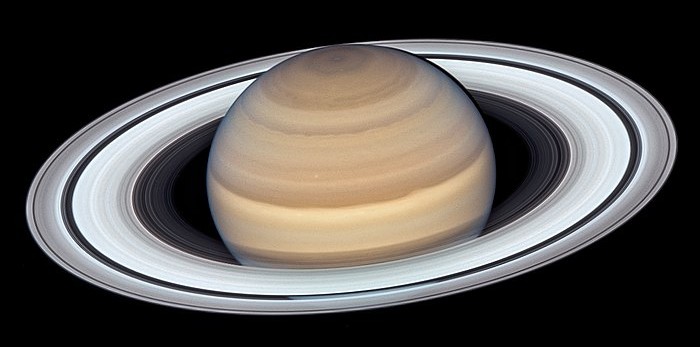
Who doesn’t know about the rings of Saturn? These rings are one of the most important characteristics of Saturn. And, we are fascinated by this structure around the planet. But what are these? Interestingly, these rings consist of dust, bits of ice, and rocks.
These bits come in different shapes and sizes. Some of these are just as minute as specks of dust, whereas some are the complete opposite and can be as enormous as gigantic buildings. The rings of Saturn are very thin yet massive in length.
The primary rings of Saturn can almost reach from Earth to the moon. The distance between Earth and Moon is about 384,400 km or 238,900 miles.
Interestingly, there are more planets in our solar system that have planetary rings like Saturn. However, Saturn’s ones are the most visible and huge in size.
5. Saturn’s Atmosphere and Weather
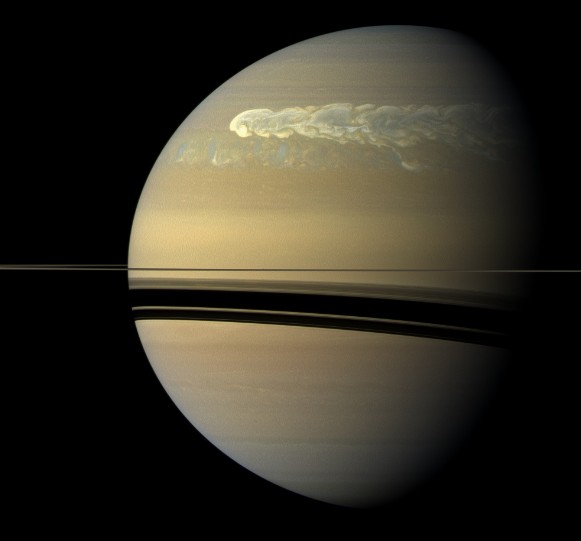
Saturn’s weather is very erratic as it is a gas giant. It is very windy in Saturn compared to Earth.
Only Neptune has faster winds than Saturn in our solar system. The data from Voyager indicates that the wind on Saturn can reach up to 500 meters per second.
That is 1,800 km or 1,180 miles per hour! In comparison, the fastest winds on Earth reache a speed of up to about 400 km or 250 miles per hour.
Neptune has the fastest winds in the solar system. It is recorded that the fastest winds on Neptune can reach up to 2,100 km or 1,300 miles per hour.
6. Saturn’s Rotation around the Sun
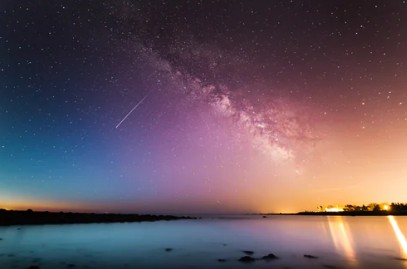
Like all the other planets, Saturn also revolves around the Sun. Saturn is very slow in revolving around the Sun. the average distance between the Sun and Saturn is about 1.4 billion kilometers.
Saturn has an average orbital speed of about 9.68 kilometers per second. As a result, this planet needs about 29.5 Earth years to complete 1 revolution around the Sun.
7. Saturn’s Rotation on Its Own Axis
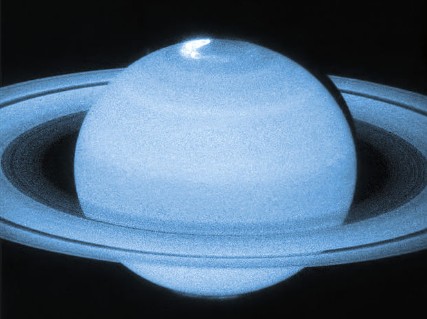
Saturn is known to rotate very fast on its own axis. However, it was a mystery for a long time to find accurate data about the length of a day on that planet.
First off, scientists calculated the rotation period of Saturn from data received from the Voyager 1 and 2.
It was estimated that Saturn needs about 10 hours 39 minutes and 22.4 seconds to rotate around its own axis from that data.
In January 2019, astronomers reported new data about the length of the day of Saturn. According to the reports, the length of a day on Saturn is equal to about 10 hours 33 minutes and 38 seconds on Earth.
8. Saturn is Very Flat
Like all the other planets, Saturn is also round in shape. However, in comparison to others, Saturn is the flattest planet in the solar system. The flatness is caused primly by the high-speed rotation of the planet.
Except for Jupiter, Saturn is the fastest planet in the solar system when it comes to rotating on its own axis. It rotates about 6,200 miles/hour.
9. Can Saturn be seen from earth? YES

Saturn is the 9th brightest natural object in the night sky. As a result, it is possible to see it from Earth with the naked eye.
However, if you want to get a good and detailed look at the giant planet, you will have to use a telescope.
Saturn is one of only 5 planets that can be observed from Earth with the naked eye.
10. Saturn to the Ancients
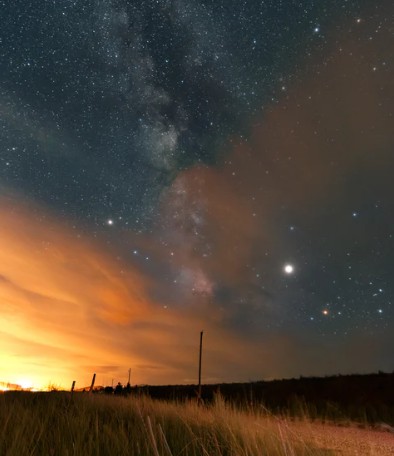
Due to its bright nature and closeness to Earth, Saturn was easily visible from Earth with the naked eye. As a result, the planet was discovered in ancient times and there is recorded language about it from the Babylonian times
The Roman called this planet ‘Star of Saturn’. In contrast, the Greek would call the planet as ‘Φαίνων Phainon’ or ‘Shining’.
In Modern Greek, Saturn is known as ‘Cronus/Kronos’, the name comes from the Greek God ‘Cronus’. Interestingly, many ancient people would think of Saturn as a star-like Sun.
11. Where did Saturn get its name
Saturn has got its name from the Roman God of wealth, farming, and agriculture. He was also the God of time in Roman mythology.
That might also be another reason for naming this planet after the Roman God of framing ‘Saturn’.
The astronomical symbol of Saturn is ‘♄’ that refers to the sickle of ‘Saturn’, the God of agriculture in ancient Roman religion.
12. Saturn’s Moons
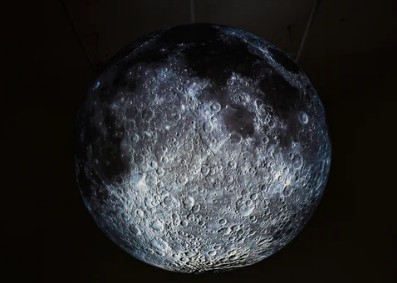
Saturn has the most number of moons among all the planets in the solar system. Till now, astronomers have discovered about 82 moons of Saturn.
Among them, 53 moons have been named officially. It is also known that there are hundreds of moonlets present around the planet.
The 2nd largest moon of Saturn is called ‘Rhea’. It is reported that it might have a ring system of its own like the planet Saturn itself.
Most of the moons of Saturn are very small. And, almost all the moons of Saturn are named after the Titans of Greek mythology.
13. Core of Saturn
Although Saturn is a gas planet, it is thought that the core of the planet might be consist of solid rock and iron-nickel compounds.
The core might be surrounded by many layers of different compounds like metallic hydrogen, liquid helium, and hydrogen, a gaseous outer layer, etc.
The temperature at the core of Saturn is so high that the hydrogen there could easily be converted into metal.
According to estimations of astronomers, the core of Saturn might be 9 to 22 times the mass of our planet.
14. Diamond Rain on Saturn
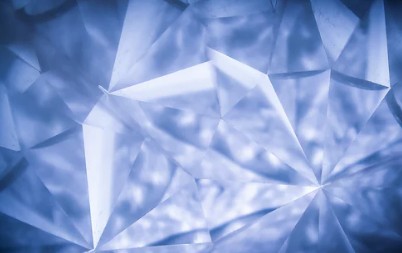
It is reported that rainfalls of diamonds might be a common occurrence on Saturn. The process begins at the upper atmosphere of the planet where lightning storms turn methane gas into carbon ( soot ).
While the soot is falling down, it gets pressured by the atmosphere and the planet as a whole.
At about 1,000 miles depth, the soot turns into graphite. After it travels a few more thousand miles, the graphite turns to diamonds.
That’s when Saturn experiences diamond rain like some other planets in the solar system such as Jupiter, Uranus, and Neptune.
15. Saturn’s Moon Titan
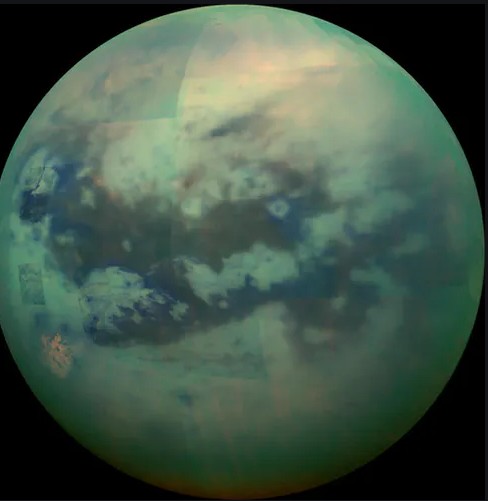
The largest moon of Saturn is named ‘Titan’. It is the 2nd largest moon in the entire solar system.
That makes it larger than the planet ‘Mercury’. It wouldn’t be far-fetched to say this is one of a kind moon in our solar system. Why? First and foremost, Titan is reported to have hydrocarbon lakes.
It is the only moon that has a substantial and thick atmosphere among all the moons in the solar system.
The atmosphere of Titan is about 370 miles deep that makes it around 10 times thicker than the atmosphere of Earth.
16. Origin of Saturn’s Ring

Saturn’s rings are one of the most notable things about the planet. But, how did these rings form in the first place?
Unfortunately, astronomers don’t have an accurate and correct answer for this as of yet. However, there are 2 theories on the origin of Saturn’s ring.
The first one is that these rings could be the remains of a destroyed moon of the planet. And the second theory is that these rings could be the remnants of the original nebular material from which the planet ‘Saturn’ was formed in the first place.
17. Spacecraft’s Flyby
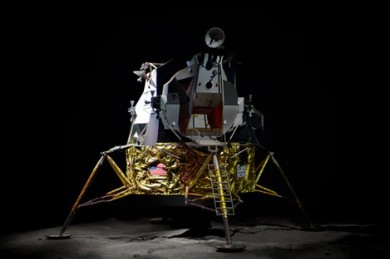
Thus far, Saturn has been visited by 4 man-made space crafts. The spacecrafts are:
- Pioneer 11
- Voyager 1
- Voyager 2
- Cassini–Huygens.
In 1979, the Pioneer 11 spacecraft flew by Saturn and its moons. The Voyager 1 and 2 had flown by Saturn and its moons back in 1980 and 1981 respectively.
And, the ‘Cassini–Huygens’ orbited the gas giant and its moons from 2004 to 2017. Interestingly, it even landed on ‘Titan’, the largest moon of Saturn back in 2005. It is planned that a new emission named ‘Dragonfly’ will land on ‘Titan’ in 2034.
18. The Cassini–Huygens Spacecraft
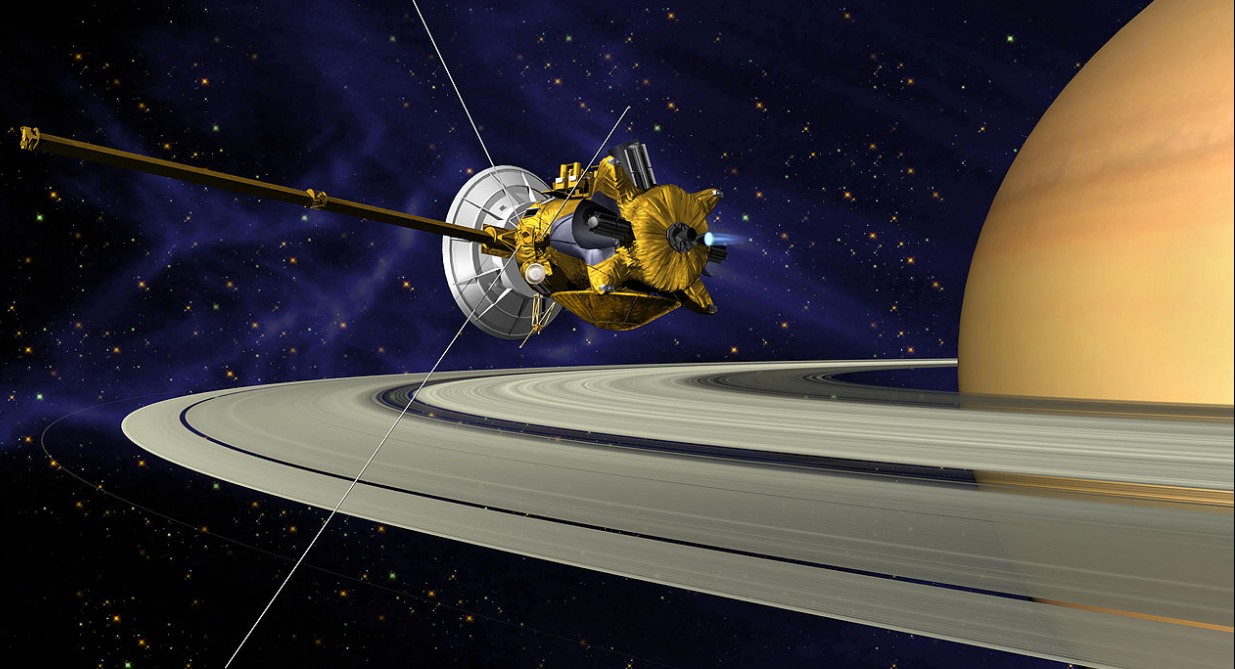
The Cassini–Huygens mission is arguably one of the most successful and the longest mission regarding the planet Saturn.
The mission was maintained by NASA, ESA, and ASI. In this mission, they have used a space prove named ‘Cassini’ to orbit around Saturn to accumulate data about the planet, its moons, and its rings.
The space probe was launched back on 15th October 1997. It took about 6 years to reach Saturn’s orbit. And, it was there for about 13 years researching about Saturn.
The Cassini–Huygens mission ended with the dive of the space probe into the upper atmosphere of Saturn on 15th September 2017.
This mission was very helpful in learning new information about the planet. For instance, due to this mission, astronomers could calculate the length of a day in Saturn more accurately.
Also, they could find the age of the rings of Saturn from this mission as well. It is reported that Saturn’s rings are very new. These might have formed between 10 to 100 million years ago.
19. Galileo and Saturn

Although people all over the world knew about Saturn from prehistoric times, it was Galileo Galilei, who used a telescope to observe Saturn for the first time in history.
It was July 1610, when he actually described characteristics of Saturn better than earlier. However, due to the poor quality of his telescope, he couldn’t observe the rings of the planet very well.
As a result, he incorrectly assumed them as a couple of moons. Records show that he sent a letter to his friend ‘Kepler’ saying that he has discovered 2 moons around the planet Saturn using his telescope.
20. The Temperature of Saturn
There are signs of constant storms and tornadoes on this planet. It has 2 layers of clouds. And, the upper layer of the clouds consist of ammonia ice that has a temperature of about -280° F or -173° C.
Next, we have the layer with a temperature of about -127° F or -88° C that consists of water ice. Lastly, the lower layer of Saturn’s atmosphere has a high temperature of about 134° F or 57° C.
However, the average temperature of Saturn is about -288° F or -178°. That way, we can say that Saturn is a very cool planet. However, if you approach the core, the temperature would rise gradually.
The peak temperature at the core of Saturn is about 11,700° C or 6483° F. Saturn is also known to emit about 2.5 times more energy to space compared to the energy it recovers from the Sun.
21. Saturn’s Unique Moon Hyperion
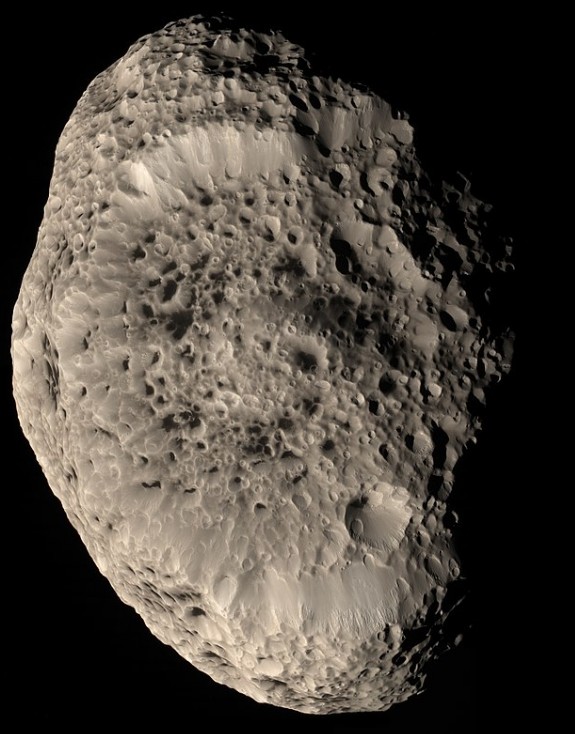
Saturn has many moons. However, the ‘Hyperion’ is one of the most unique of them all. It was the first moon to be discovered that is non-round in shape in history.
The name ‘Hyperion’ comes from the name of the God of observation and watchfulness in Greek mythology.
This moon is also known as ‘Saturn VII’. The moon was discovered on 16th September 1848 by William Bond, George Bond, and William Lassell.
‘Hyperion’ is well known for its unexplained appearance (sponge-like), chaotic rotation, and irregular shape.
22. Saturn’s Moon Enceladus
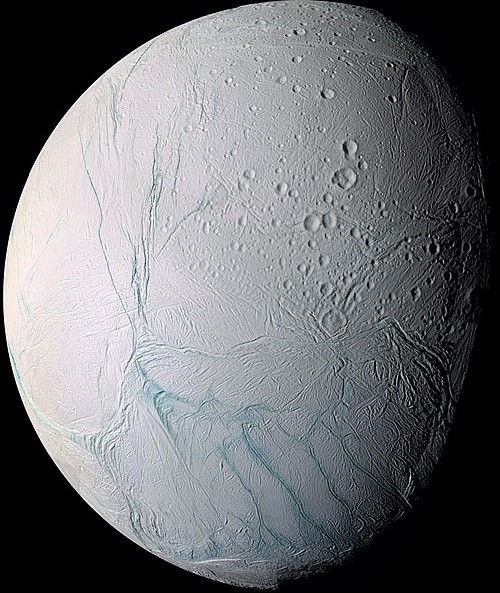
Enceladus is another unique moon of Saturn. The diameter of the moon is about 500 km that makes it the 6th largest moon of Saturn.
This satellite is covered by clean and fresh ice that makes it one of the most reflective objects in the solar system.
It is seen that Enceladus throws out water from its icy cracks occasionally. Reports suggest that this phenomenon is caused by the intense gravity of Saturn.
As a result, this moon has become one of the only few objects that have active volcanoes.
A new study finds that this moon has an ocean under the primary icy outer surface for billions of years.
Many astronomers also suspect that the Enceladus could be one of the most habitable spots in our solar system after Earth.
23. The Disappearance of Saturn’s Rings
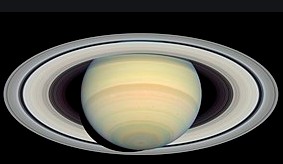
The rings of Saturn are very thin. As a result, when our planet passes through the ring plane of Saturn, the rings seem to disappear from our view briefly.
This phenomenon occurs every 15 years. According to the calculation, this will happen again in 2025. However, we might not be able to observe this as Saturn will be very close to the Sun.
24. Saturn’s Low Density
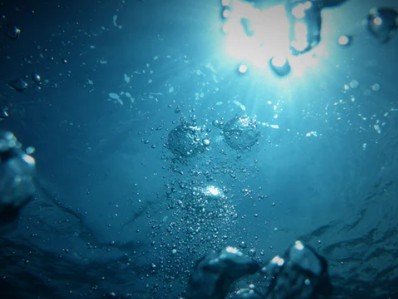
Even though Saturn is a huge planet, it has a very low density as it is a gas palest. In fact, it is about 30 percent less dense than water.
This is the only planet in our solar system to have less density compared to water. That means Saturn would float on water. Interesting, isn’t it?
25. Saturn’s Origin
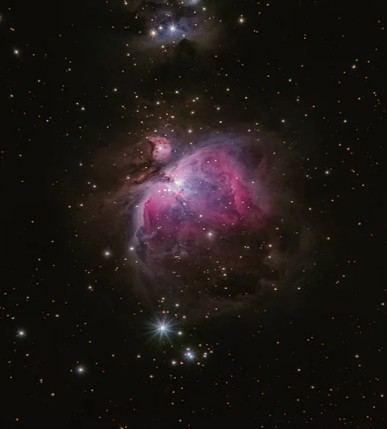
Studies suggest that Saturn also formed with the rest of the solar system. So, Saturn is about 4.5 billion years old at the moment.
It was formed because of gravity pulling gases and dust in the earlier stage of the solar system.
This gaseous planet settled on to its current spot about 4 billion years ago. There is no true surface of this planet due to its gaseous nature.
If you would visit this planet, you wouldn’t have a place to land your spacecraft as there’s no surface at all.
Wrapping it Up
Saturn is stunning, mysterious, and enigmatic in many ways. This giant was a topic of interest from ancient times. Still, astronomers are uncovering new mysteries about this planet every other day.
We hope that with the advancement of science and technology, we will learn more about this planet in the near future. If you have found this post useful, don’t forget to share this.
